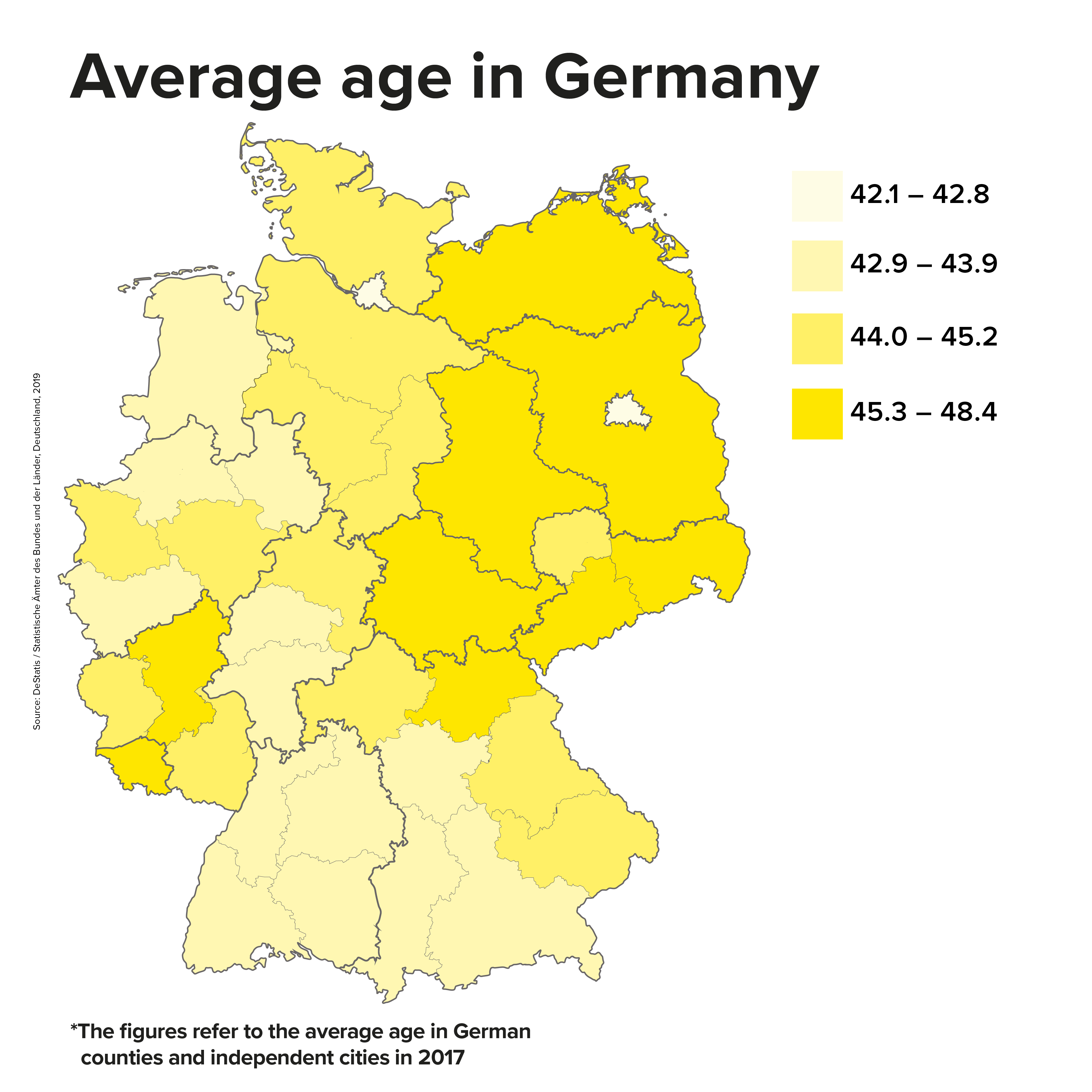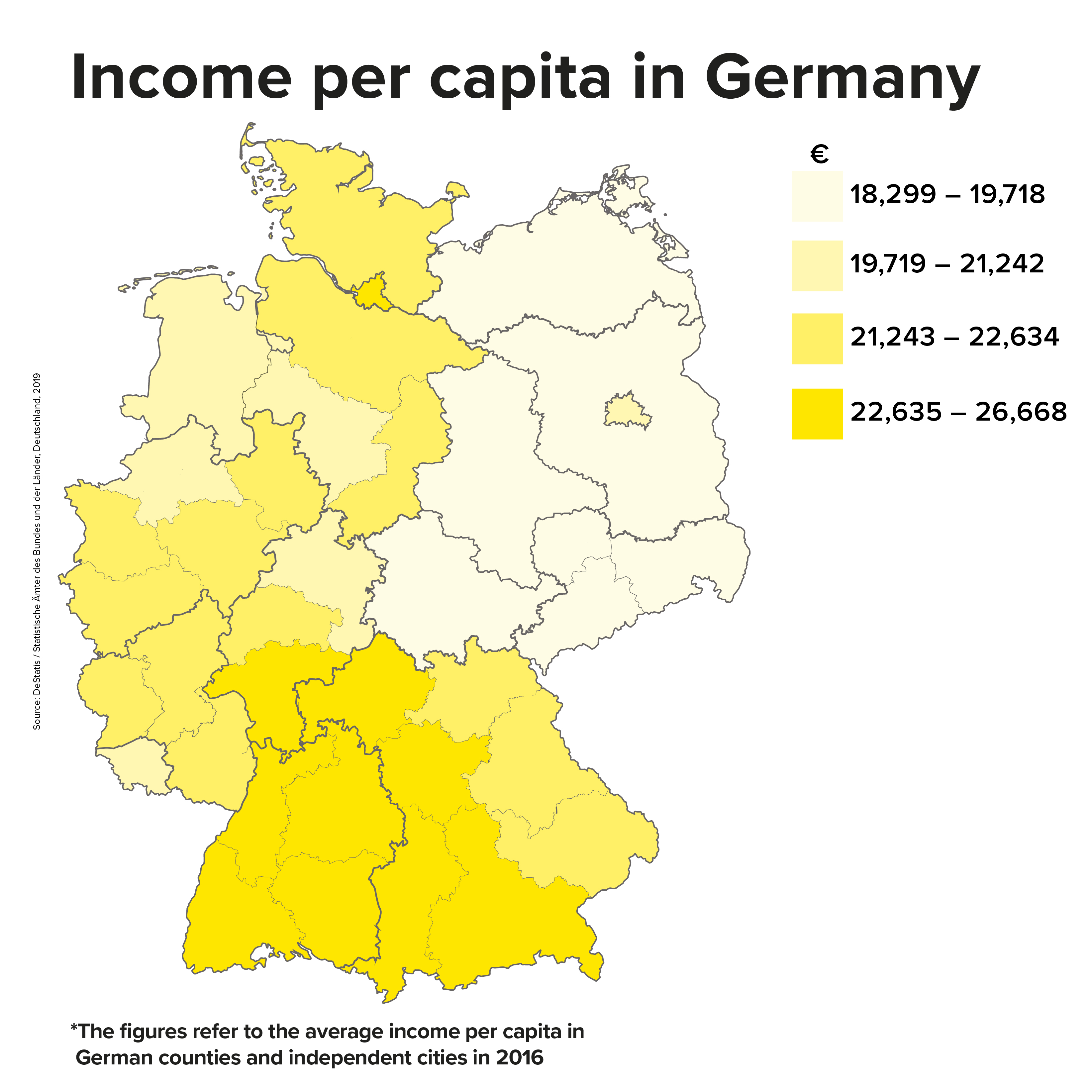One country – many differences
There are many differences between east and west – and also between north and south. Surprising insights: Germany, 30 years after the fall of the Wall.

When people talk about regional differences in Germany, since reunification many compare east and west. But that is only half the truth. On many issues, contrasts can be found between north and south, and on others between south and west or north and east. These comparisons can be surprising – see for yourself:

Density of population
Population centres often correspond with economic centres because people move where they can find work. Traditionally, comparatively few people live in the agricultural northeast. From there a broad strip of thinly populated territory stretches to the south through densely forested landscapes.

Average age
A high average age can have various reasons. In the new German states it is primarily due to the fact that large numbers of young people moved to the west in search of training and work after the collapse of the GDR economy.

Employment rate
The employment rate indicates the proportion of a population in work. This proportion is highest in the south and the east. It declines the further north and west you go. The employment rate does not make a distinction between full-time and part-time work.

Per capita income
Per capita income is highest where lots of people have well-paid work. These centres are mainly located in the south. Hamburg is an exception here.

Childcare
Childcare was a major government responsibility in the former GDR because of the high proportion of working women. Today, childcare provision for young children is still significantly better in the new German states than in the rest of the country.

School leavers with university entrance qualifications
The number of school leavers qualified to enter higher education is just one of several benchmarks for measuring the quality of school education. The schools with the highest numbers of potential university entrants are distributed all over the country.
You would like to receive regular information about Germany? Subscribe here:


